Sukkot and Simchat Torah Books (Page 2) |
If you wish to purchase any of these books, click on either the title or the book cover to be directed to Amazon.com. As a warning, I have put up pictures of the book covers to give you somewhat an idea of the style of each book (I know, I know. "Don't judge a book by its cover") so the pages may load slowly, depending on the speed of your internet connection.
For books containing all the Jewish holidays, go to
The
Holiday Collection Page
If this page came up without frames, Click here to see the complete "Books for Jewish Children" website
Other Pages of Interest:
Jewish Holiday Collections
|
Shabbat Books |
Rosh Hashanah & Yom Kippur Books |
Sukkot & Simchat Torah Books
(Page 1)
(Page 2)
(Page 3)
|
Hanukkah Books |
Tu B'Shevat & Lag B'Omer Books |
Purim Books |
Passover Books |
Shavout Books
Jewish Children's Books |
Bar Mitzvah Books |
Jewish Parenting Books |
Jewish Music for Children |
Jewish Children's Videos |
Jewish Jewelry
If this page came up without frames, Click here to see the complete "Books for Jewish Children" website
Other Pages of Interest:
Jewish Holiday Collections
|
Shabbat Books |
Rosh Hashanah & Yom Kippur Books |
Sukkot & Simchat Torah Books
(Page 1)
(Page 2)
(Page 3)
|
Hanukkah Books |
Tu B'Shevat & Lag B'Omer Books |
Purim Books |
Passover Books |
Shavout Books
Jewish Children's Books |
Bar Mitzvah Books |
Jewish Parenting Books |
Jewish Music for Children |
Jewish Children's Videos |
Jewish Jewelry
Jewish Children's Books | Bar Mitzvah Books | Jewish Parenting Books | Jewish Music for Children | Jewish Children's Videos | Jewish Jewelry
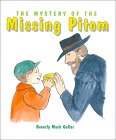 The Mystery of the Missing Pitom By Beverly Mach Geller |
After Yosef, his brothers, and his father built their sukkah, they went to buy a lulav and etrog. Yosef is fascinated by its fragrance and can't wait until the holiday arrives to smell it again. But his father placed the lulav and etrog on the top shelf of the cabinet. This is the start of Yosef's problems.
Before Sukkot begins, six-year-old Yosef accidentally breaks the etrog and fears that he has spoiled his family's holiday. Includes an explanation of the holiday and a glossary of Hebrew words. |
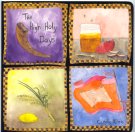 The High Holidays By Camille Kress |
Introduce your child to the symbols and themes of the High Holidays and Jewish autumn festivals. A Brand New Year is hte fifth in the series of Jewish holiday board books by Camille Kress. Using her renowned watercolor illustrations and engaging poetry, Rosh HaShanah, Yom Kippur, Sukkot, and Simchat Torah are all introduced to the young child.
|
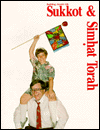 Building Jewish Life: Sukkot and Simhat Torah |
Readers learn about Sukkot, "The Feast of Tabernacles" and Simhat Torah, the holiday that celebrates the beginning of a new year of Torah reading. |
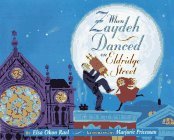 When Zaydeh Danced on Eldridge Street By Elsa Okon Rael |
This radiant story about the power of the Torah is illustrated by Marjorie Priceman, a Caldecott Honor-winning artist. The atmospheric art brings this celebration of Jewish immigrant life in the 1930s America to exuberant life. With a thorough glossary, a generous author's note, and two delightful recipes, the book is complete in all its exquisite detail.
Zeesie has a problem--she doesn't want to visit her grandparents on Eldridge Street. Her teeny-tiny grandmother, Bubbeh Ruchel, is nothing to worry about, but Zaydeh Avrum is another story. Zaydeh ("grandfather" in Yiddish) is stern and stooped-over, and complains that "children bring in dirt and make noise." But since her mother is having a baby, Zeesie has no choice but to make the trip. When she arrives, Zaydeh impatiently quizzes Zeesie about what holiday it is and why it is important to the Jewish religion. Zeesie becomes more intimidated than ever when she learns it's Simchas Torah, and that Zaydeh expects her to attend a celebration at the synagogue with him. Although Zeesie arrives at the festivities reluctantly, she ends up having the time of her life amidst the beautiful stained glass, sweet foods, laughter, singing and ... dancing. And what's this? Even severe, stiff Zaydeh is dancing! During her stay on Eldridge Street, Zeesie learns about the history and traditions of Judaism, and she also sees that there's more to white-haired Zaydeh than she thought. In this celebratory immigrant family tale set in the Lower East Side of Manhattan during the 1930s, eight-year-old Zeesie has gone to stay with her grandparents while her mother has a baby. Zeesie loves her "teeny-tiny" Bubbeh, but is uncomfortable around her brusque grandfather Zaydeh. But in temple with Zaydeh on Simchas Torah, the holiday that celebrates the completion of the yearly Torah-reading cycle, Zeesie wins her Zaydeh's approval by asking the all-important question of the Jewish faith: "What is Torah?" When the dancing begins, the elated Zaydeh leads the congregation outdoors with his now-adoring granddaughter behind him. The reverential text concludes with a recalling of all the day's wonders-including the birth of Zeesie's new baby brother-climaxed by the scroll, "The most precious treasure of all the wonder of wonders." Priceman's jubilant illustrations lighten grandfather's severity and accent the rejoicing of the holiday. The final page shows the night skyline of Eldridge Street highlighted by the Chagallesque stained glass window of the synagogue. The vibrant blues, golds, and purples of the temple's circular windows receive competition from the joyous silhouettes of Zeesie and Zaydeh embracing the Torah, dancing like fiddlers on the roof against a huge luminescent background moon. An appended author's note and glossary more fully reveal Rael's love for this particular environment and its uniqueness as a cultural center for Jews during the 1930s. |
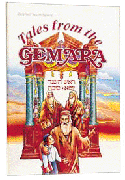 Tales from the Gemara : Rosh Hashanah / Yom Kippur / Succah (Vol 3) |
Stories from the Talmud, dramatized for children. |
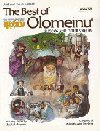 Best Of Olomeinu: Succos and Other Stories |
Selected stories from Olomeinu, the children's magazine. |
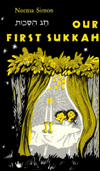 Our First Sukkah By Norma Simon |